Facile Synthesis of MXene/MnO2 Nanocomposites for Efficient Removal of Radionuclide Uranium
Abstract
:1. Introduction
2. Experimental Detail
2.1. Reagents and Chemicals
2.2. Preparation of MXene/MnO2 Composite
- (1)
- In a beaker, 2 g lithium fluoride (LiF) and 22.5 mL hydrochloric acid (HCl) were slowly added to 7.5 mL ultrapure water (deionized water) solution at room temperature. The mixture was then placed on a magnetic stirrer and covered with plastic wrap. Then, 1 g of Ti3AlC2 powder was added to the mixed solution over a period of 30 min. The obtained solution was put into a hydrothermal reaction kettle and placed in a water bath. The reaction was kept on the stirrer for 24–48 h under the water bath at 35 °C.
- (2)
- After stirring in the water bath, the material obtained in step (1) was poured into several different centrifuge tubes. Ultrapure water was added to these tubes, and the tubes were shaken well to ensure that the quality of each centrifuge tube was the same (around 0.5 mg). These centrifuge tubes were then centrifuged with a high-speed centrifuge at 3500 r/min for 5 min. The centrifuged material and its supernatant were discarded, and the precipitated part was retained. This process was repeated 6 or 7 times until the pH of the obtained supernatant was around 6.
- (3)
- The material obtained by centrifugation in step (2) was poured into a centrifuge tube and 20 mL ultrapure water was added. The tube was closed, and the material was shaken by hand for 2 h. Then, 20 mL ultrapure water was added, and the supernatant was obtained after centrifugation at 3500 r/min for 30 min. Next, 20 mL ultrapure water was added to the precipitate, shaken by hand for 30 min, and then, 20 mL ultrapure water was added. The supernatant was obtained after centrifugation at 5000 r/min for 20 min. The precipitate was then taken and added to 20 mL ultrapure water, which was then ultrasonically treated through an ultrasonic cleaner for 25 min. Next, 20 mL ultrapure water was added, and the solution was centrifuged at 5000 r/min for 20 min to obtain the supernatant.
- (4)
- The supernatant liquid obtained in step (3) was frozen in a refrigerator or under the condition of liquid nitrogen. It was then put into a centrifuge tube, opened, and placed in an atmosphere of an inert gas such as nitrogen to dry. The desired MXene nanomaterials were obtained by drying them at 60 °C for about 24 h. The MXene material was stored in a refrigerator for later use.
- (5)
- To prepare the MXene/MnO2 composites, several hydrothermal reactor inner liners were taken, and 70 mL ultrapure water was measured through a graduated cylinder. Ultrapure water was added to the reactor, and 20 mg MXene was weighed with an electronic analytical balance and slowly added to the reaction kettle to obtain a mixed solution. The lid of the reaction kettle was fastened, and it was put into an ultrasonic cleaner for about 10 min. Then, the magnet was added to the solution, and the reaction kettle was placed on the magnetic stirrer and stirred at a speed of about 500 r/min for 7–8 min. Next, 25 mg potassium permanganate powder was weighed out using an electronic analytical balance and slowly added to the stirring solution. After completing the stirring process, the magnet was removed, and the lid of the reactor was securely fastened. Next, the reactor was placed into the hydrothermal reactor and tightened before inserting it into an oven at a temperature of 120 °C for 4 h. After the hydrothermal treatment was completed, the reactor was removed and the supernatant solution was poured out. Next, the sedimentation part of the lower layer was carefully poured into multiple centrifuge tubes, and ultrapure water was added to the tubes to ensure that the mass difference between the tubes was less than 0.5 mg. Then, the tubes were centrifuged using a high-speed centrifuge for 10 min at a rotational speed of 6000 r/min. After centrifugation, the precipitates were transferred to a drying oven, and the lid was opened. The material was dried at 60 °C for 24 h to obtain the desired powder of MXene/MnO2 composites.
2.3. Batch Adsorption Experiments
2.4. Characterization
3. Results and Discussion
3.1. Characterization of MXene/MnO2 Composites
3.2. Effect of Initial Concentration
3.3. Effect of pH
3.4. Effect of Coexisting Ions
3.5. Effect of Humic Acid
4. Conclusions
Author Contributions
Funding
Data Availability Statement
Conflicts of Interest
References
- Dam, H.; Reinhoudt, D.; Verboom, W. Multicoordinate ligands for actinide/lanthanide separations. Chem. Soc. Rev. 2007, 36, 367–377. [Google Scholar] [CrossRef] [PubMed]
- Ewing, R. Nuclear Fuel Cycle: Environmental Impact. MRS Bull. 2008, 33, 338–340. [Google Scholar] [CrossRef]
- Schnug, E.; Lottermoser, B. Fertilizer-Derived Uranium and its Threat to Human Health. Environ. Sci. Technol. 2013, 47, 2433–2434. [Google Scholar] [CrossRef] [PubMed]
- Li, Z.; Chen, F.; Yuan, L.; Liu, Y.; Zhao, Y.; Chai, Z.; Shi, W. Uranium(VI) adsorption on graphene oxide nanosheets from aqueous solutions. Chem. Eng. J. 2012, 210, 539–546. [Google Scholar] [CrossRef]
- Yusan, S.; Akyil, S. Sorption of uranium(VI) from aqueous solutions by akaganeite. J. Hazard. Mater. 2008, 160, 388–395. [Google Scholar] [CrossRef]
- Brandy, D.; Scott, F. Impact of Uranyl–Calcium–Carbonato Complexes on Uranium(VI) Adsorption to Synthetic and Natural Sediments. Environ. Sci. Technol. 2010, 44, 928–934. [Google Scholar]
- Naguib, M.; Mashtalir, O.; Carle, J.; Presser, V.; Lu, J.; Hultman, L.; Gogotsi, Y.; Barsoum, M.W. Two-Dimensional Transition Metal Carbides. ACS Nano 2012, 6, 1322–1331. [Google Scholar] [CrossRef]
- Peng, Q.; Guo, J.; Zhang, Q.; Xiang, J.; Liu, B.; Zhou, A.; Liu, R.; Tian, Y. Unique Lead Adsorption Behavior of Activated Hydroxyl Group in Two-Dimensional Titanium Carbide. J. Am. Chem. Soc. 2014, 136, 4113–4116. [Google Scholar] [CrossRef]
- Charles, M.; Pascal, B.; Bernard, B. Separation of long–lived radionuclides from high active nuclear waste. Comptes Rendus Phys. 2002, 3, 797–811. [Google Scholar]
- Bruno, J.; Ewing, R. Spent Nuclear Fuel. Elements 2006, 2, 343–349. [Google Scholar] [CrossRef]
- Luo, X.; Zhang, G.; Wang, X. Research on a pellet co-precipitation micro-filtration process for the treatment of liquid waste containing strontium. J. Radioanal. Nucl. Chem. 2013, 298, 931–939. [Google Scholar] [CrossRef]
- Xin, L. Study on Radioactive Wastewater Treatment by Precipitation and Membrane Separation. Appl. Mech. Mater. 2014, 490–491, 972–975. [Google Scholar]
- Abdi, S.; Nasiri, M.; Mesbahi, A.; Khani, M.h. Investigation of uranium (VI) adsorption by polypyrrole. J. Hazard. Mater. 2017, 332, 132–139. [Google Scholar] [CrossRef] [PubMed]
- Sureshkumar, M.K.; Das, D.; Mallia, M.B.; Gupta, P.C. Adsorption of uranium from aqueous solution using chitosan-tripolyphosphate (CTPP) beads. J. Hazard. Mater. 2010, 184, 65–72. [Google Scholar] [CrossRef] [PubMed]
- Amesh, P.; Venkatesan, K.A.; Suneesh, A.S.; Samanta, N. Diethylenetriamine tethered mesoporous silica for the sequestration of uranium from aqueous solution and seawater. J. Environ. Chem. Eng. 2020, 8, 103995. [Google Scholar] [CrossRef]
- Gan, J.; Zhang, L.; Wang, Q.; Xin, Q.; Hu, E.; Lei, Z.; Wang, H.; Wang, H. Synergistic action of multiple functional groups enhanced uranium extraction from seawater of porous phosphorylated chitosan/coal-based activated carbon composite sponge. Desalination 2023, 545, 116154. [Google Scholar] [CrossRef]
- Parab, H.; Joshi, S.; Shenoy, N.; Verma, R.; Lali, A.; Sudersanan, M. Uranium removal from aqueous solution by coir pith: Equilibrium and kinetic studies. Bioresour. Technol. 2005, 96, 1241–1248. [Google Scholar] [CrossRef]
- Wang, G.; Liu, J.; Wang, X.; Xie, Z.; Deng, N. Adsorption of uranium (VI) from aqueous solution onto cross-linked chitosan. J. Hazard. Mater. 2009, 168, 1053–1058. [Google Scholar] [CrossRef]
- Yan, T.; Luo, X.; Zou, Z.; Lin, X.; He, Y. Adsorption of Uranium(VI) from a Simulated Saline Solution by Alkali-Activated Leather Waste. Ind. Eng. Chem. Res. 2017, 56, 3251–3258. [Google Scholar] [CrossRef]
- Liu, Y.-L.; Wang, L.; Zeng, Q.; Yan, C.; Kang, Q. A homologous strategy to parallelly construct doped MOFs-derived electrodes for flexible solid-state hybrid supercapacitors. Nano Res. 2023. [Google Scholar] [CrossRef]
- Shang, J.; Liu, C.; Wang, Z.; Zachara, J.M. Effect of Grain Size on Uranium(VI) Surface Complexation Kinetics and Adsorption Additivity. Environ. Sci. Technol. 2011, 45, 6025–6031. [Google Scholar] [CrossRef] [PubMed]
- Yu, J.; Yu, C.; Zhu, W.; He, G.; Wei, Y.; Zhou, J. Hydrous titanium oxide and bayberry tannin co-immobilized nano collagen fibrils for uranium extraction from seawater and recovery from nuclear wastewater. Chemosphere 2021, 286, 131626. [Google Scholar] [CrossRef] [PubMed]
- Yan, C.; Liu, Y.-L.; Zeng, Q.; Wang, G.-G.; Han, J. 2D Nanomaterial Supported Single-Metal Atoms for Heterogeneous Photo/Electrocatalysis. Adv. Funct. Mater. 2023, 33, 2210837. [Google Scholar] [CrossRef]
- Othman, Z.; Mackey, H.R.; Mahmoud, K.A. A critical overview of MXenes adsorption behavior toward heavy metals. Chemosphere 2022, 295, 133849. [Google Scholar] [CrossRef]
- Zhang, Y.; Zhou, J.; Wang, D.; Cao, R.; Li, J. Performance of MXene incorporated MOF-derived carbon electrode on deionization of uranium(VI). Chem. Eng. J. 2022, 430, 132702. [Google Scholar] [CrossRef]
- Wang, D.; Song, J.; Wen, J.; Yuan, Y.; Liu, Z.; Lin, S.; Wang, H.; Wang, H.; Zhao, S.; Zhao, X. Significantly Enhanced Uranium Extraction from Seawater with Mass Produced Fully Amidoximated Nanofiber Adsorbent. Adv. Energy Mater. 2018, 8, 1802607. [Google Scholar] [CrossRef]
- Ma, L.; Huang, Y.; Deng, H.; Yin, H.; Tian, Q.; Yan, M. Removal of Uranium (VI) from Acidic Aqueous Solution by Fluorapatite. J. Inorg. Mater. 2021, 37, 395–403. [Google Scholar] [CrossRef]
- Yu, R.; Lu, Y.; Zhang, X.; Chen, W.; Chen, X.; Li, L. Amidoxime-modified ultrathin polyethylene fibrous membrane for uranium extraction from seawater. Desalination 2022, 539, 115965. [Google Scholar] [CrossRef]
- Zhou, Z.; Liu, Q.; Zhu, J.; Liu, J.; Zhang, H.; Yu, J.; Chen, R.; Li, Y.; Wang, J. Defective carbon nitride ultrathin nanosheets enriched with amidoxime groups for enhanced visible light-driven reduction of hexavalent uranium. J. Colloid Interface Sci. 2022, 628, 840–848. [Google Scholar] [CrossRef]
- Sun, Y.; Li, Y. Application of surface complexation modeling on adsorption of uranium at water-solid interface: A review. Environ. Pollut. 2021, 278, 116861. [Google Scholar] [CrossRef]
- Xiao, F.; Cheng, Y.; Zhou, P.; Chen, S.; Wang, X.; He, P.; Nie, X.; Dong, F. Fabrication of novel carboxyl and amidoxime groups modified luffa fiber for highly efficient removal of uranium(VI) from uranium mine water. J. Environ. Chem. Eng. 2021, 9, 105681. [Google Scholar] [CrossRef]
- Yang, A.-L.; Yang, S.-Y.; Zhu, Y.-K. Magnetic modification of used tea leaves for uranium adsorption. New Carbon Mater. 2021, 36, 821–826. [Google Scholar] [CrossRef]
- Zeng, J.; Zhang, H.; Sui, Y.; Hu, N.; Ding, D.; Wang, F.; Xue, J.; Wang, Y. New Amidoxime-Based Material TMP-g-AO for Uranium Adsorption under Seawater Conditions. Ind. Eng. Chem. Res. 2017, 56, 5021–5032. [Google Scholar] [CrossRef]
- Chen, X.; Wang, Y.; Lv, J.; Feng, Z.; Liu, Y.; Xia, H.; Li, Y.; Wang, C.; Zeng, K.; Liu, Y.; et al. Simple one-pot synthesis of manganese dioxide modified bamboo-derived biochar composites for uranium(vi) removal. New J. Chem. 2022, 46, 14427–14438. [Google Scholar] [CrossRef]
- Wen, D.; Ying, G.; Liu, L.; Sun, C.; Li, Y.; Zhao, Y.; Ji, Z.; Wu, Y.; Zhang, J.; Zhang, J.; et al. Flexible and High-Performance MXene/MnO2 Film Electrodes Fabricated by Inkjet Printing: Toward a New Generation Supercapacitive Application. Adv. Mater. Interfaces 2021, 8, 2101453. [Google Scholar] [CrossRef]
- Wang, Q.; Zhang, Z.; Zhang, Z.; Zhou, X.; Ma, G. Facile synthesis of MXene/MnO2 composite with high specific capacitance. J. Solid State Electrochem. 2019, 23, 361–365. [Google Scholar] [CrossRef]
- Zhong, L.; He, F.; Liu, Z.; Dong, B.; Ding, J. Adsorption of uranium (VI) ions from aqueous solution by acrylic and diaminomaleonitrile modified cellulose. Colloids Surf. A Physicochem. Eng. Asp. 2022, 641, 128565. [Google Scholar] [CrossRef]
- Zhang, P.; Wang, L.; Du, K.; Wang, S.; Huang, Z.; Yuan, L.; Li, Z.; Wang, H.; Zheng, L.; Chai, Z.; et al. Effective removal of U(VI) and Eu(III) by carboxyl functionalized MXene nanosheets. J. Hazard. Mater. 2020, 396, 122731. [Google Scholar] [CrossRef]
- Yao, W.; Wu, Y.; Pang, H.; Wang, X.; Yu, S.; Wang, X. In-situ reduction synthesis of manganese dioxide@polypyrrole core/shell nanomaterial for highly efficient enrichment of U(VI) and Eu(III). Sci. China Chem. 2018, 61, 812–823. [Google Scholar] [CrossRef]
- Li, K.; Xiong, T.; Liao, J.; Lei, Y.; Zhang, Y.; Zhu, W. Design of MXene/graphene oxide nanocomposites with micro-wrinkle structure for efficient separating of uranium(VI) from wastewater. Chem. Eng. J. 2022, 433, 134449. [Google Scholar] [CrossRef]
- Wang, L.; Tao, W.; Yuan, L.; Liu, Z.; Huang, Q.; Chai, Z.; Gibson, J.K.; Shi, W. Rational control of the interlayer space inside two-dimensional titanium carbides for highly efficient uranium removal and imprisonment. Chem. Commun. 2017, 53, 12084–12087. [Google Scholar] [CrossRef] [PubMed]
- Zhang, P.; Wang, L.; Huang, Z.; Yu, J.; Li, Z.; Deng, H.; Yin, T.; Yuan, L.-Y.; Gibson, J.K.; Mei, L.; et al. Aryl Diazonium-Assisted Amidoximation of MXene for Boosting Water Stability and Uranyl Sequestration via Electrochemical Sorption. ACS Appl. Mater. Interfaces 2020, 12, 15579–15587. [Google Scholar] [CrossRef] [PubMed]
- Li, Z.-J.; Wang, L.; Yuan, L.-Y.; Xiao, C.-L.; Mei, L.; Zheng, L.-R.; Zhang, J.; Yang, J.-H.; Zhao, Y.-L.; Zhu, Z.-T.; et al. Efficient removal of uranium from aqueous solution by zero-valent iron nanoparticle and its graphene composite. J. Hazard. Mater. 2015, 290, 26–33. [Google Scholar] [CrossRef] [PubMed]
- Xu, J.; Li, Y.; Jing, C.; Zhang, H.; Ning, Y. Removal of uranium from aqueous solution using montmorillonite-supported nanoscale zero-valent iron. J. Radioanal. Nucl. Chem. 2014, 299, 329–336. [Google Scholar] [CrossRef]
- Wang, S.; Wang, L.; Li, Z.; Zhang, P.; Du, K.; Yuan, L.; Ning, S.; Wei, Y.; Shi, W. Highly efficient adsorption and immobilization of U(VI) from aqueous solution by alkalized MXene-supported nanoscale zero-valent iron. J. Hazard. Mater. 2021, 408, 124949. [Google Scholar] [CrossRef] [PubMed]
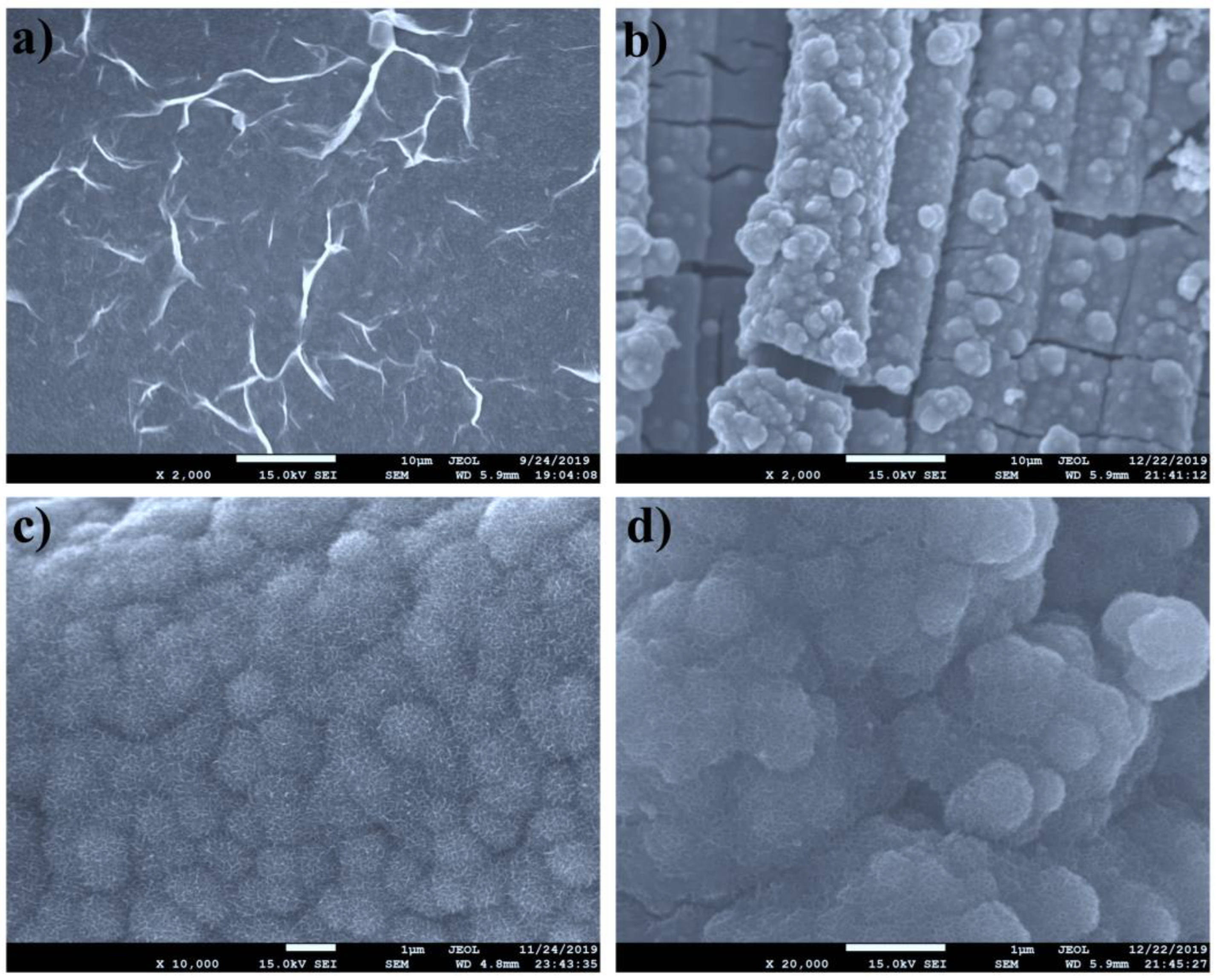
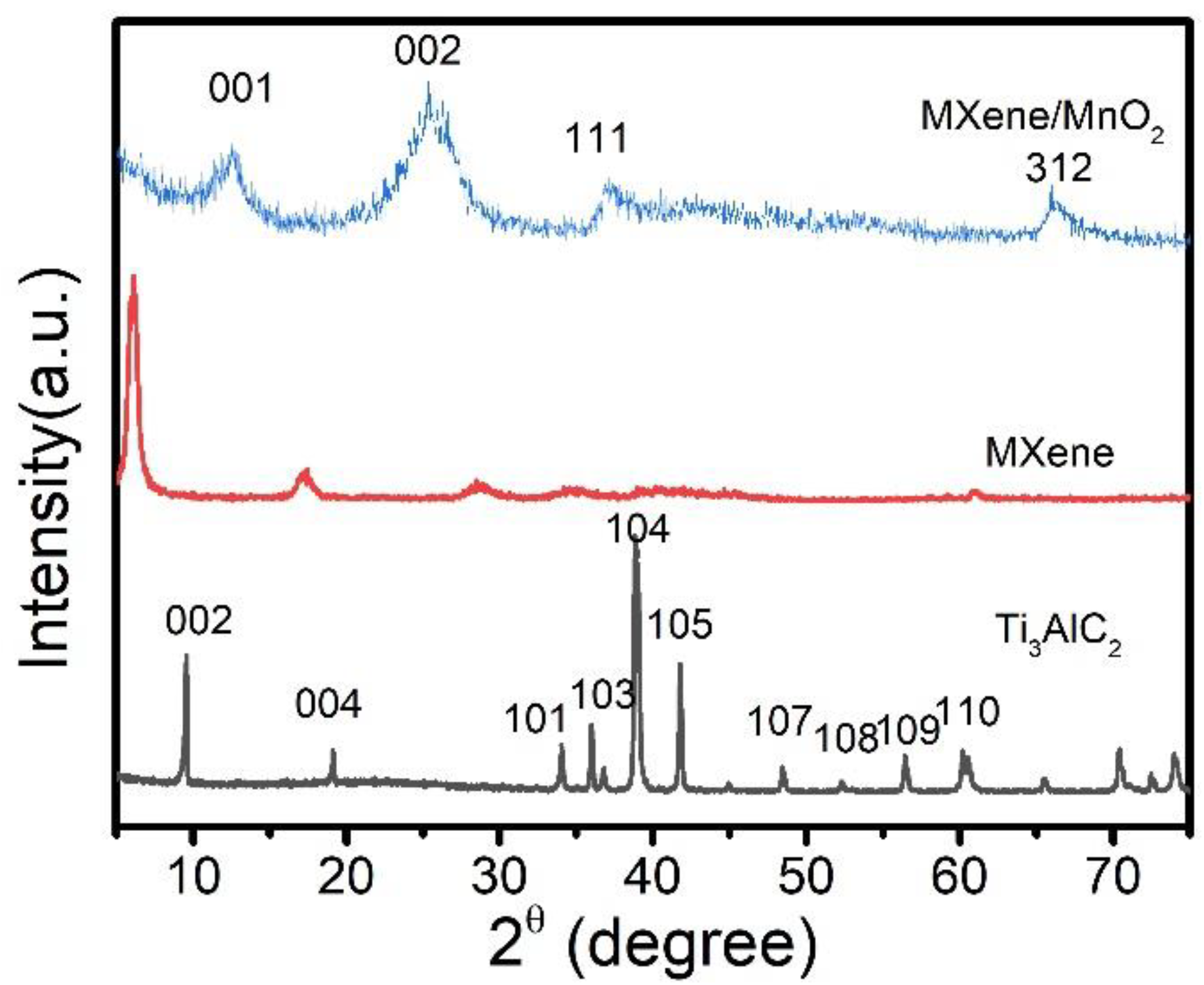
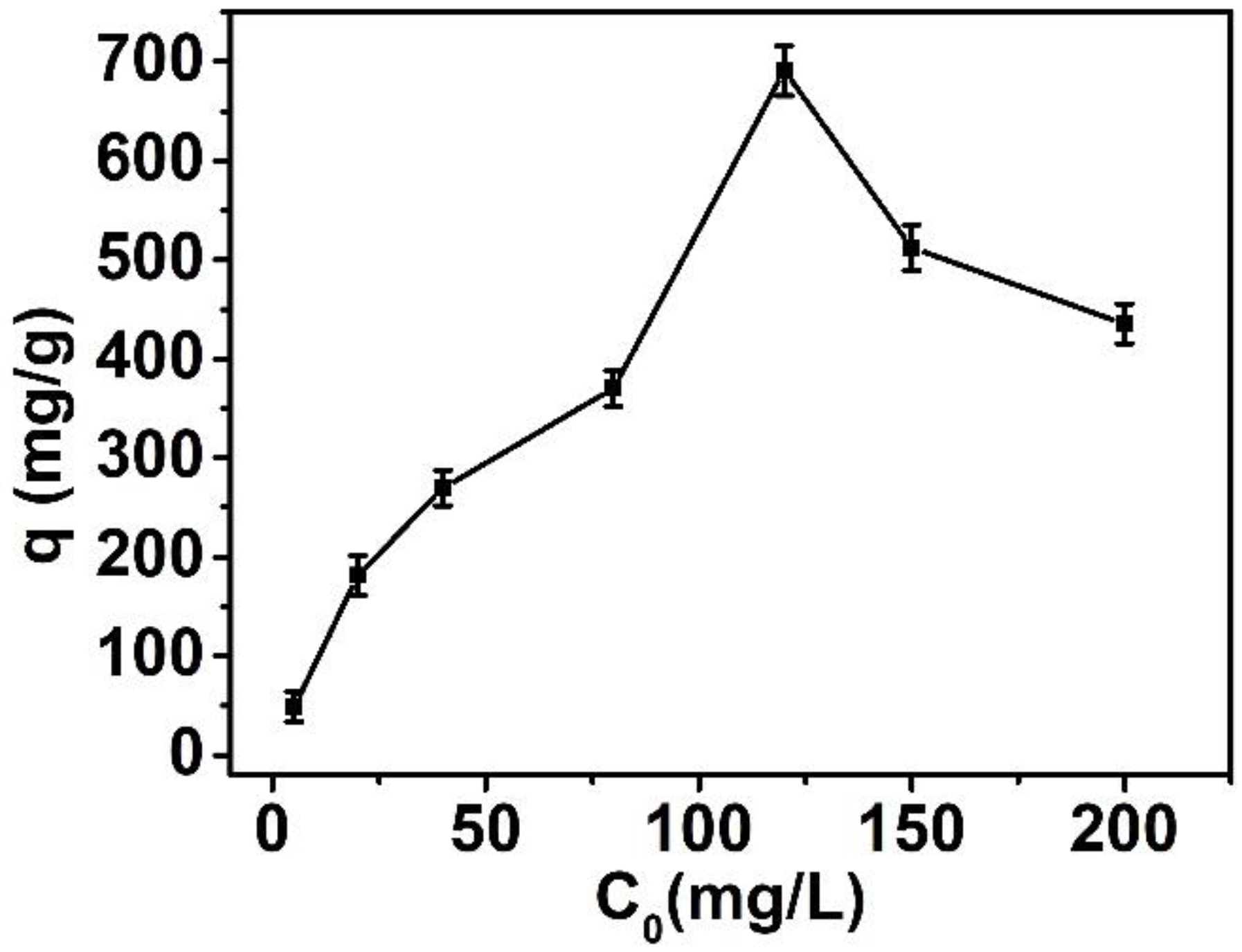
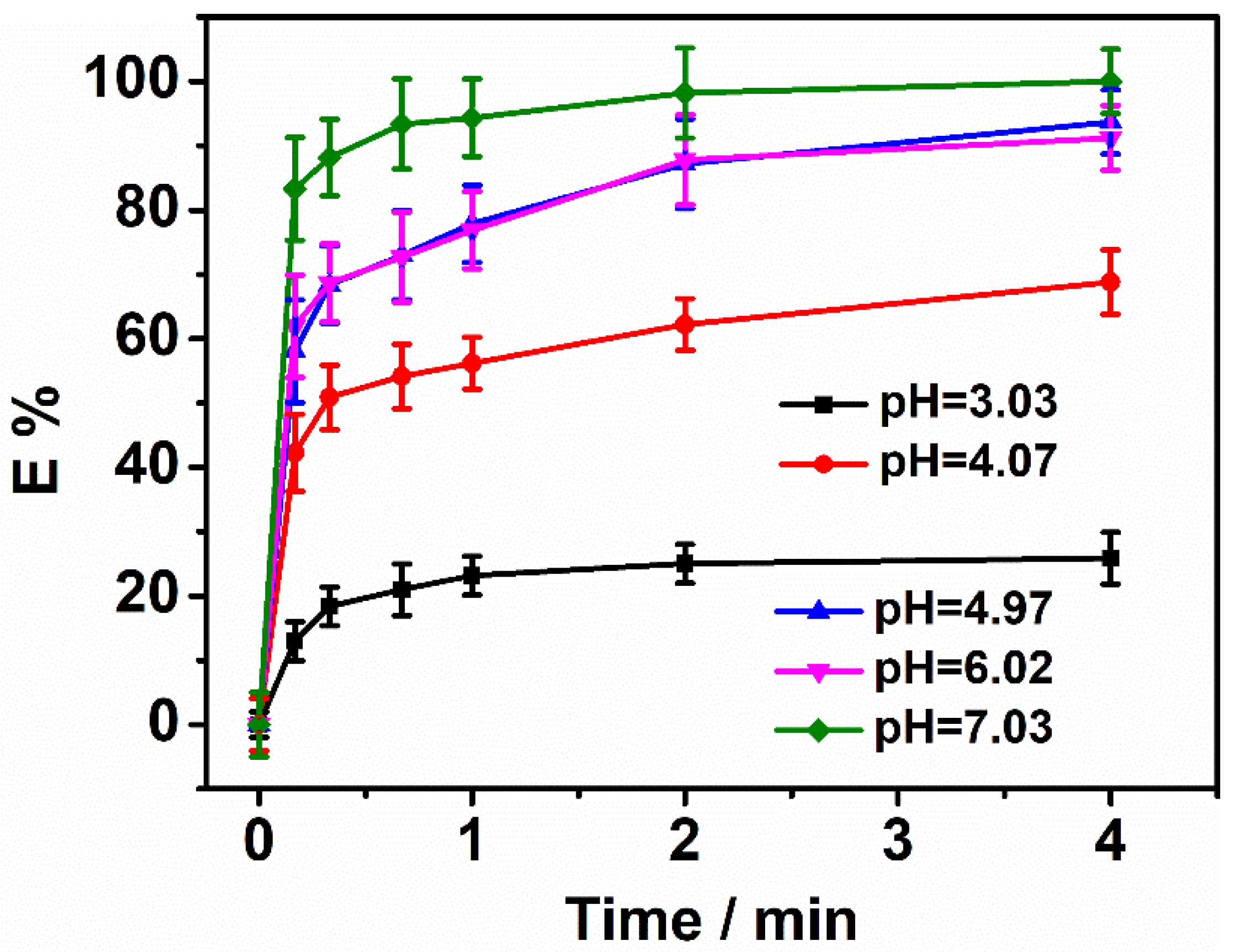

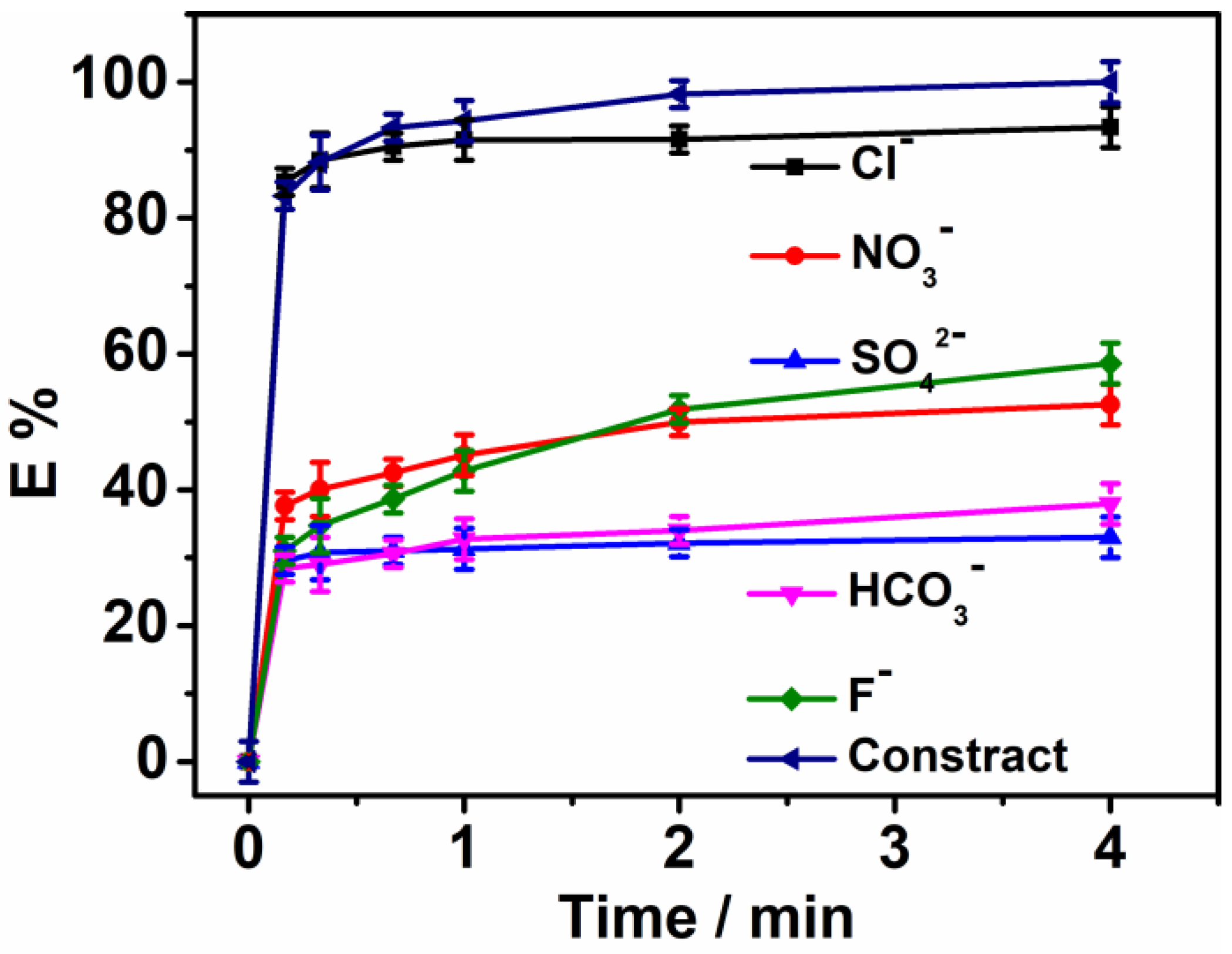
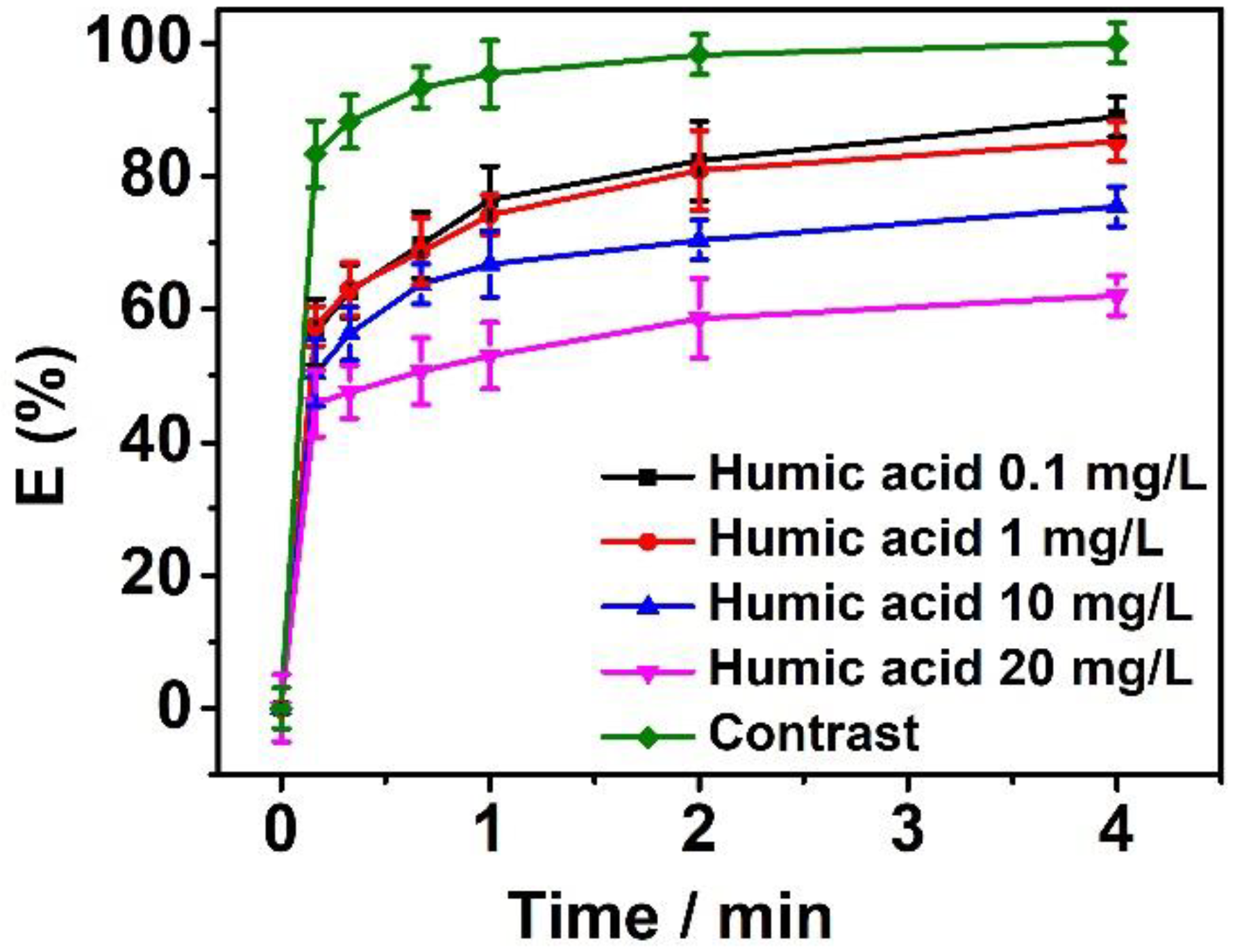
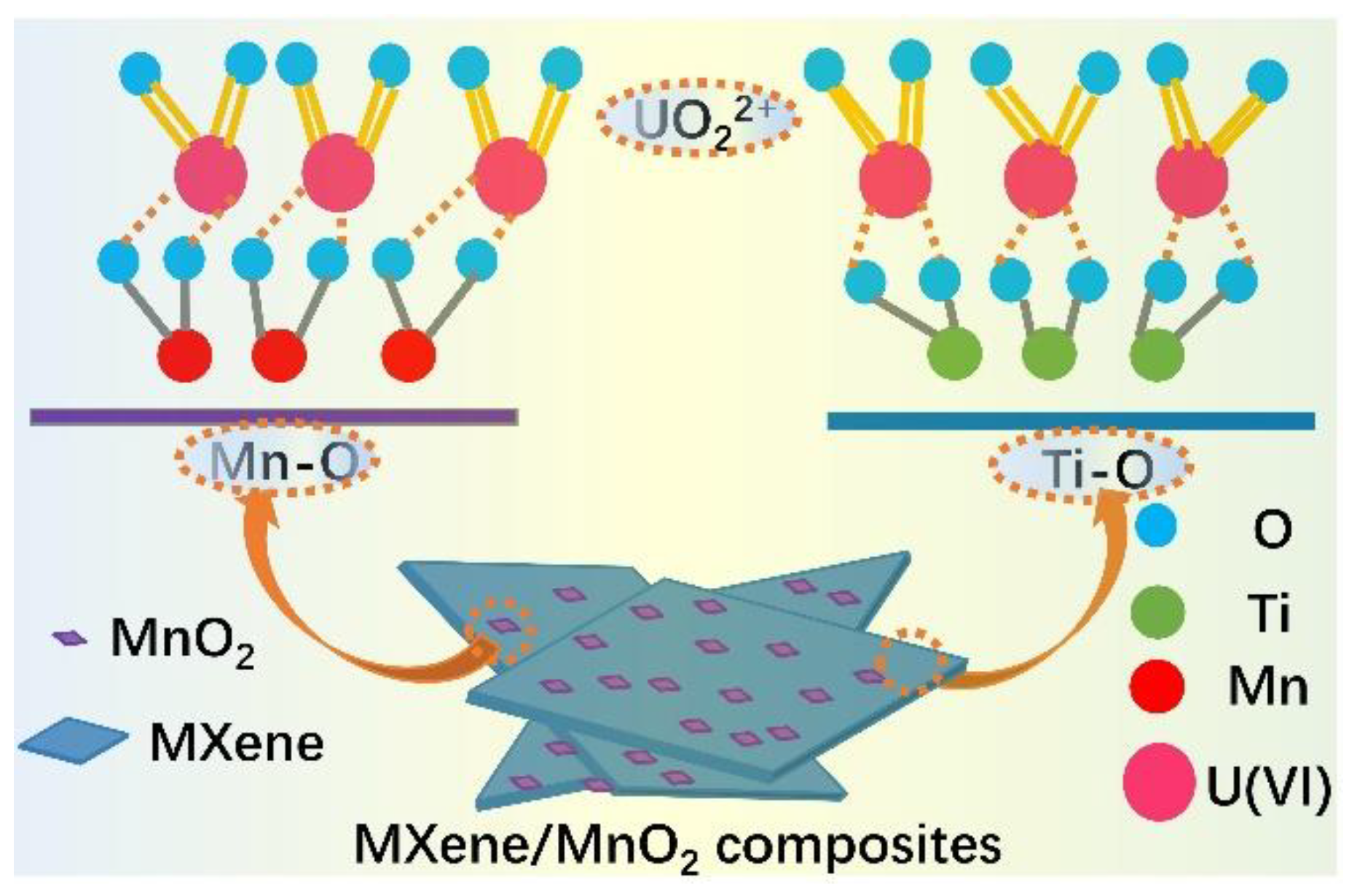
| Adsorbents | Initial [U(VI)] | pH | Adsorption Capacity (mg/g) | Ref. |
|---|---|---|---|---|
| Ti3C2Tx-DMSO-hydrated | 100 mg/L | 5.0 | 214 | [41] |
| Amidoxime-Functionalized Ti3C2Tx Nanoflakes | 21 mg/L | 5.0 | 394 | [42] |
| Fe/RGO composites | 714 mg/L | 6.5 | 4174 | [43] |
| M-nZVI | 100 mg/L | 6.2 | 403.25 | [44] |
| nZVI/Alk-Ti3C2Tx | 200 mg/L | 3.5 | 1315 | [45] |
| MXene/MnO2 | 120 mg/L | 7.03 | 696 | This work |
Disclaimer/Publisher’s Note: The statements, opinions and data contained in all publications are solely those of the individual author(s) and contributor(s) and not of MDPI and/or the editor(s). MDPI and/or the editor(s) disclaim responsibility for any injury to people or property resulting from any ideas, methods, instructions or products referred to in the content. |
© 2023 by the authors. Licensee MDPI, Basel, Switzerland. This article is an open access article distributed under the terms and conditions of the Creative Commons Attribution (CC BY) license (https://creativecommons.org/licenses/by/4.0/).
Share and Cite
Wang, L.; Liu, Y.-L. Facile Synthesis of MXene/MnO2 Nanocomposites for Efficient Removal of Radionuclide Uranium. Crystals 2023, 13, 804. https://doi.org/10.3390/cryst13050804
Wang L, Liu Y-L. Facile Synthesis of MXene/MnO2 Nanocomposites for Efficient Removal of Radionuclide Uranium. Crystals. 2023; 13(5):804. https://doi.org/10.3390/cryst13050804
Chicago/Turabian StyleWang, Ling, and Yi-Lin Liu. 2023. "Facile Synthesis of MXene/MnO2 Nanocomposites for Efficient Removal of Radionuclide Uranium" Crystals 13, no. 5: 804. https://doi.org/10.3390/cryst13050804






